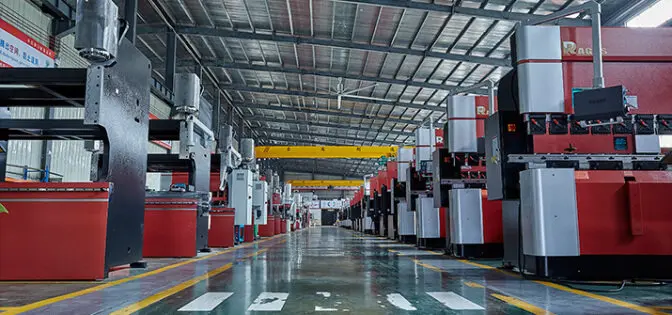Şirket Profili
Anyang Younengde Electric Co., Ltd, DC plazma eritme ekipmanının , yüksek güçlü DC güç kaynağı ve katı atık / toksik olmayan arıtma ekipmanı araştırma ve geliştirme, tasarımı, üretimi, kurulumu ve işletilmesi konusunda uzmanlaşmış yüksek teknoloji ürünü bir girişimdir. . Şirketimiz DC plazma eritme ekipmanı hakkında 35 yeni pratik teknik patent aldı. Ekipman kapasitesi 50KVA ila 30000kva arasındadır. Nadir ve değerli metallerin çiğ cevher, katalizör ve endüstriyel katı atıklardan çıkarılması ve zenginleştirilmesi işlemi yüksek verimle olgundur. Metalik silikon ve 75 # ferrosilicon verimi, silika eritilmesinde yüksektir. Atık devre kartları doğrudan eritildiğinde, demir olmayan metallerin geri kazanım oranı yüksektir. Kalsiyum alüminat eritme işlemi olgundur. Şirketimiz, yurtiçinde ve yurtdışında birçok işletme ve birimle profesyonel işbirliği ve teknik borsalar gerçekleştirdi ve yüksek kaliteli ürünler sağladı. Ürün Vaka Listesi Çin Bilimler Akademisi Mekanik Enstitüsü (Teknik Hizmet İşbirliği) Suzhou Tasarım ve Araştırma Enstitüsü (Teknik Hizmet İşbirliği) Anyang Longxin Silikon Industry Co., Ltd ( M etallik silikon tozu remelting dc fırını) Hubei Boxin Yeni Malzeme Technology Co., Ltd (Metalik Silikon Eritme DC Fırını) Danjiangkou Huiyuan Hejin Co., Ltd (Metalik Silikon Eritme DC Fırını) Pekin Merkezi Demir ve Çelik Araştırma Enstitüsü ( Çelik Fırın) Dalian Wilte Steel Co., Ltd (Vanadyum Titanyum Demir Deneysel DC fırını) Henan Liyuan Group Co., Ltd (Ferroalloy Fırın) Wu'an Yuhua Steel Group Co., Ltd (çelik alüminyum alaşım DC fırını) Tangshan Ganglu Steel Group Co., Ltd (çelik alüminyum alaşım DC fırını) Heil Ongjiang Jianghui Huanbao Technology Co., Ltd ( Ferronickel Alaşım DC Fırını) Guangdong Guangqing Jinshu Technology Co., Ltd ( Ferronickel Alaşım DC Fırını) Henan Jiaozuo Bay Zuo ( m ulti-function dc fırını) Rizhao Zhenghong Yanchuang New Material Co., Ltd (Ferronickel Alaşım DC Fırını) Fujian Anxi Ansheng Madencilik A.Ş., Ltd ( M Ulti-Fonction DC Fırını) Liaoyangshi Taiziheque Boyi Zhuzaochang (Atık Çinko Cüruf DC Fırını) Chongqing Saiyadi Energy Technology Co., Ltd (Kırmızı Çamur İrMaplama DC Fırını) Liaoning Fuyun Refractory Co., Ltd ( kalsiyum alüminat DC fırını) Huolingerole Gerun Huanbao Technology Co., Ltd (kalsiyum alüminat DC fırını ) Huolingerole Lifenglvye Co., Ltd (Kalsiyum Alüminat DC Fırını ) Dalian Yishun LVSE Technology Co., Ltd (Kalsiyum Alüminat DC Fırını ) Danjiangkoushi Wanji aşındırıcı malzemeler , Ltd (Corundum DC fırını ) Jiangsu Nantong Taiyang Technology Co., Ltd (berilyum bakır alaşım DC fırını ) Jiangsu Nantong Taiyang Technology Co., Ltd (berilyum bakır alaşım DC fırını ) Endonezya Pt Metalindo Makmur Mandiri (Test DC Fırını) Kore HF Metal Trade CO., Ltd (PCB DC fırını) Guangdong Meizhou Mr. Fu (PCB DC fırını) Guizhou Yixiang Kuangye (Grup) Zhenyuan Runda Co., Ltd (Değerli Metaller DC fırını) Guangxi Zhongwu Kuangye Co., Ltd (değerli metaller DC fırını) Longyan Changyu New Material Technology Co., Ltd (değerli metaller DC fırını) Hubei Huanggang Bay Zhao (Değerli Metaller DC Fırın) Henan Yihui Jinshu Technology Co., Ltd ( üç yollu katalitik eritme DC fırını ) Shanghai Yudun Xincailiao Technology Co., Ltd (Üç Yolu Katalitik Eritme DC Fırını ) Zhejiang Qike Shengwu Technology Co., Ltd (üç yollu katalitik eritme DC fırını ) Zhejiang Metalurji Araştırma Enstitüsü (üç yollu katalitik eritme DC fırını ) Hubei Zhongyuan Chucheng Çevre Koruma Teknolojisi Co., Ltd (üç yollu katalitik eritme DC fırını ) Huaian Zhongshun Çevre Koruma Technology Co., Ltd (üç yollu katalitik eritme DC fırının iki set ) M Inshan Huanneng Hi-Tech Gufen Co., Ltd (kurşun çinko cevheri testi DC fırını) Zhejiang Teli Yenilenebilir Kaynaklar Co., Ltd (Bakır Çamur Kurtarma DC Fırını) Keyuan Çevre Equipment Co., Ltd ( Tehlikeli Atık Bertaraf DC Fırını ) Guanyinshan atık yakma istasyonu ( kül zararsız bertaraf DC fırını ) Chaozhou Dongsheng Çevre Koruma Technology Co., Ltd ( R OCK Wool DC fırını) Yongxing ch ang uzun Çevre Koruma Teknolojisi Co., Ltd (kalay cüruf eritme ve geri dönüşüm DC fırını) Kunming Dingbang Technology Co., Ltd ( kalay eritme DC fırını)











